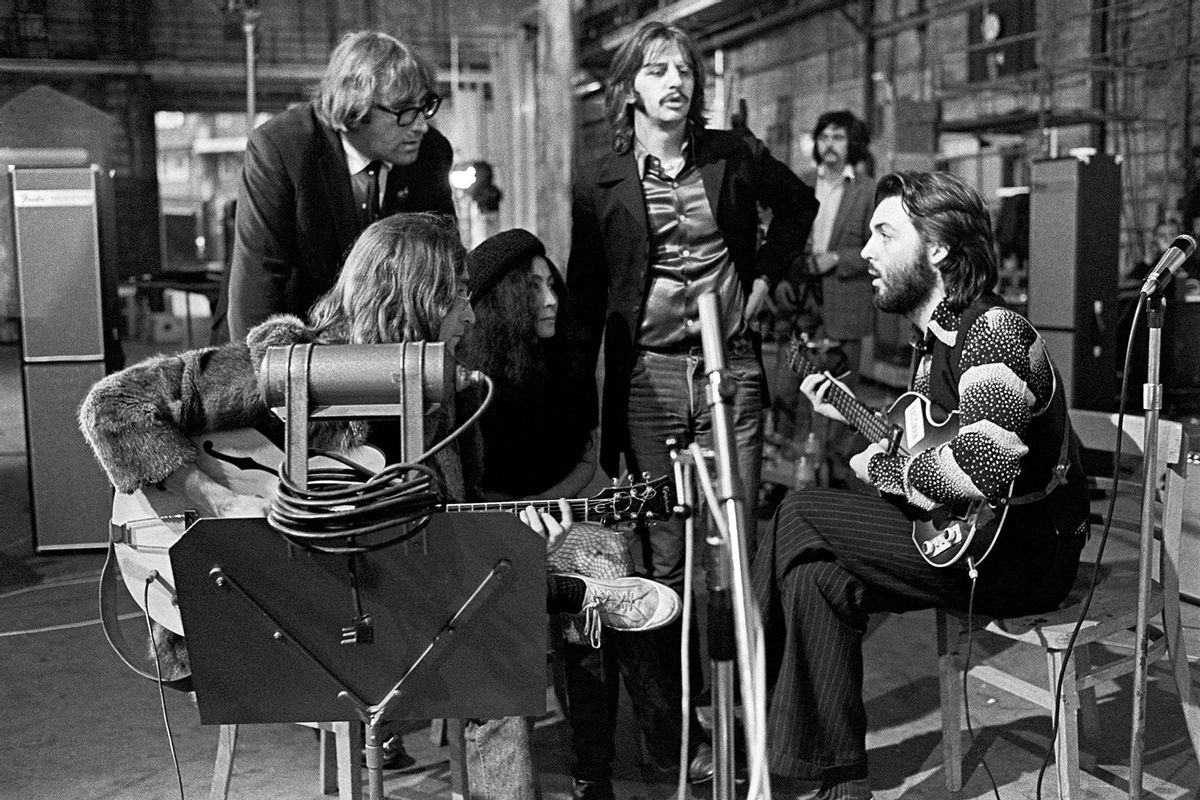Beatles fans get more time with the band’s history at Rock Hall’s extended “Get Back to Let It Be”

Today marks Ringo Starr’s 83rd birthday, and to commemorate the drummer’s life and work, the Rock and Roll Hall of Fame in Cleveland will be treating visitors to a rare opportunity to commune with the former Beatle’s Peace and Love statue, which will be on display all summer long.
To mark the occasion, I caught up with Jason Hanley, vice president of education and visitor engagement, who shared the excitement that has been generated by the statue, as well as the Rock Hall’s ongoing Beatles exhibit, entitled “Get Back to Let It Be,” which has been extended through the end of the year.
For Hanley, the chance to observe music fans, young and old alike, as they make their way through the exhibit has been pure joy. In his role at the Rock Hall, Hanley recognizes the uniqueness of music as both an art form and an artifact. “Rock ‘n’ roll is so personal to people,” he remarked. “Almost everybody who walks in, whether they’ve been a lifelong Beatles fan or they just discovered them in the last year or two, they develop a personal connection to the music. Our work involves helping them to connect their personal narrative to the history of the music that they love.”
But sharing the story of music — any music — is no easy feat. “Music is not a physical art,” said Hanley. “It is a temporal art that exists in time; we hear it, and it happens to us, and then it goes away.” He takes gentle issue with folks who downplay the Rock Hall’s collection as an assemblage of mere memorabilia. For Hanley, the museum is home to the physical artifacts that participated in bringing the music to life.
“No matter what level people are at, they’re making emotional connections.“
One of those items is John Lennon’s iconic Epiphone Casino guitar, the Beatle’s go-to instrument that he played during the famous Rooftop Concert in January 1969. As he observes fans making their way through the exhibit, Hanley particularly enjoys watching them after they’ve seen an excerpt from Peter Jackson’s “Get Back” docuseries and then find themselves in the same space as Lennon’s guitar, big as life, which now stands before them. “That’s what I love,” Hanley said, referring to the moment in which the images of the Beatles that fans know by heart suddenly appear right before their eyes.
“Many of us are lifelong Beatles fans,” Hanley noted, but the exhibit reminds us that there is always something new to learn, as well as to share with others. “People who visit the exhibit have a real-time experience of observing the history that they have known and studied come to life. No matter what level people are at, they’re making emotional connections.” In many ways, Hanley pointed out, it’s like when “my mom and dad played the Beatles for me when I was a little kid, and now I’m playing them for my own kids.”
Hanley is especially buoyed by the younger generations of music lovers who visit the museum. “Right now we have a generation growing up with complete access to music,” he said, “and they engage with it in very different ways than older generations. They quickly move through genres and styles. One minute, they can be listening to an avant-garde jazz piece and then jump to hip hop and jump to a pop song. And to them, those genre boundaries don’t matter. For today’s listeners, music is something that is happening to them right now. It exists outside of time. Whether it’s Machine Gun Kelly or the Beatles, they’re experiencing the music as it happens, without concern about time or place or genre.”
In many ways, this latter point is one of the most refreshing aspects of the Rock Hall’s mission. To see an artifact such as Lennon’s Casino, which was deployed on countless classic songs, becomes eminently more powerful. Unlike our corporeal selves, the artifact of the guitar itself, as with the Beatles’ music, will live on for successive generations, whose Beatles stories are still waiting to be told.
Read more
about the Beatles


